Coal miners: a screen of Western companies?
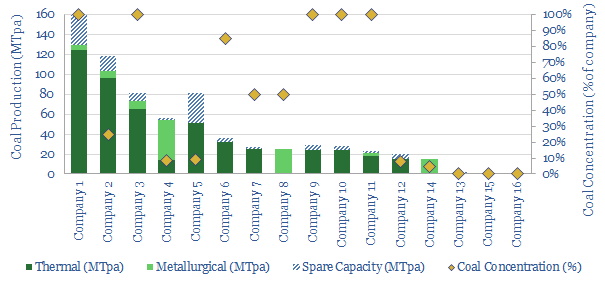
…In 2023, Teck sold its metallurgical coal business, Elk Valley Resources for $9bn to Glenore, Nippon Steel and Posco. CEZ will exit coal production by 2038. So which coal companies…

…In 2023, Teck sold its metallurgical coal business, Elk Valley Resources for $9bn to Glenore, Nippon Steel and Posco. CEZ will exit coal production by 2038. So which coal companies…
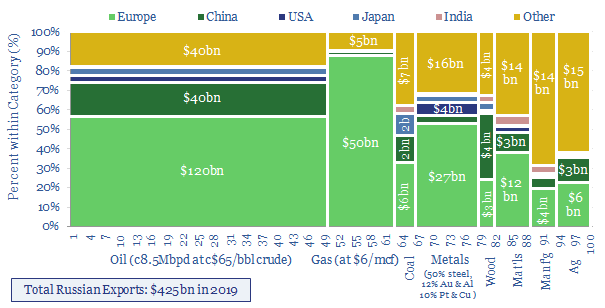
This data-file breaks down Russia’s export revenues, import country by import country, looking across oil, gas, coal, steel, aluminium, copper, gold, aluminium, ammonia, agricultural products, other metals, materials and manufactured…
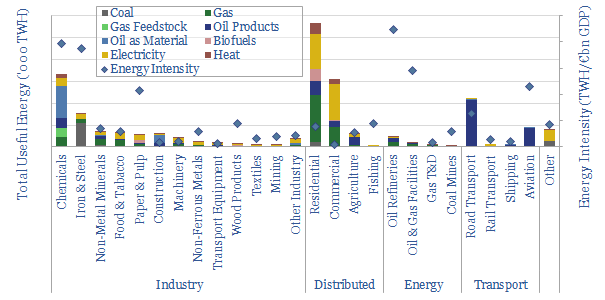
…and 28 countries. $699.00 – Purchase Checkout Added to cart The largest consumption categories are residential energy (24%), chemicals (14%), commercial energy (13%), road transport (9%) and iron and steel (6%). The…
…is used in the steel/metals industry, aerospace, brake pads of high-end automobiles and bullet proof vests. Silicon carbide material is made by super-heating high-grade silica (SiO2) with petcoke (C) in…
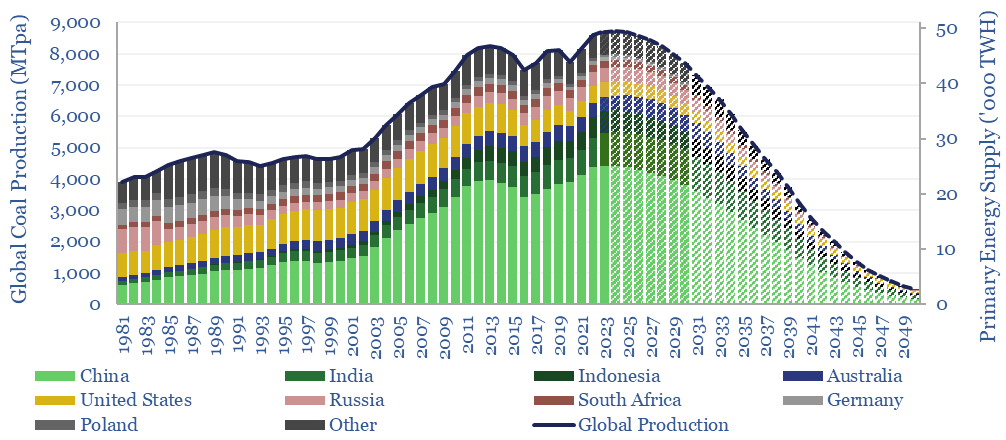
…here. Metallurgical coal may be particularly challenging to substitute. We have reviewed the costs of green steel here. We have seen some interesting but smaller-scale options in bio-coke. We have…
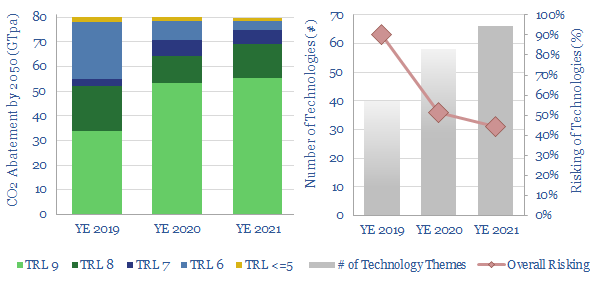
…materials such as steel and cement, which are much harder to decarbonize directly. It is reminiscent of the old cliché that NASA spent millions of dollars developing a pen that…
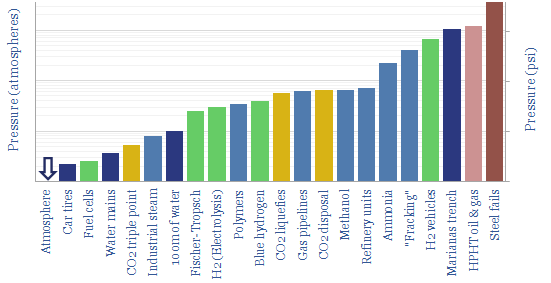
…around 4,000 atmospheres (at which point structural steel fails, per our overview of materials properties). We all have experience with 1 atmosphere of pressure (1 bar), simply by existing in…
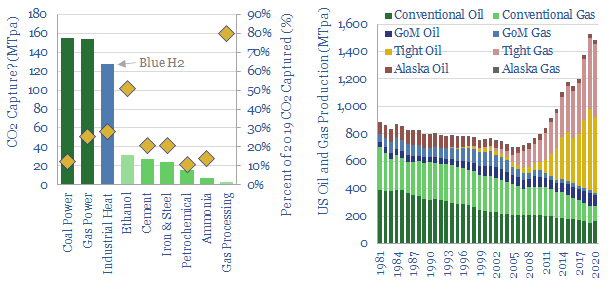
…market sizing looks industry-by-industry, to break down possible capture volumes. We discuss each industry in turn – coal power, gas power, ethanol, steel, cement, et al., – on pages 9-12….
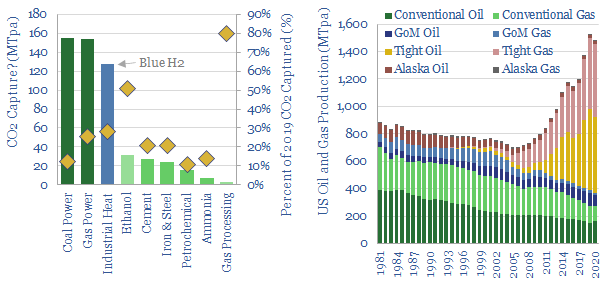
…industrial and power-sector emissions could be captured, across coal-power, gas-power, ethanol, steel, cement, chemicals and smaller manufacturing. To put this in perspective, we also quantified how many million tons of…
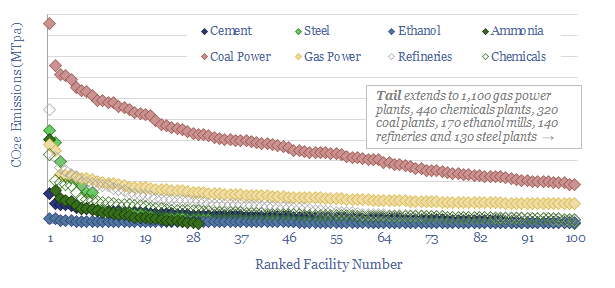
…likely too small. The best candidates are c100 specific facilities in the cement, steel and ammonia industries, which are the “right size”, have concentrated CO2 emissions and explain around 2%…